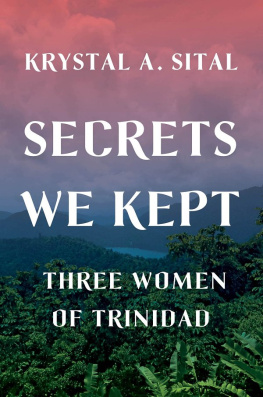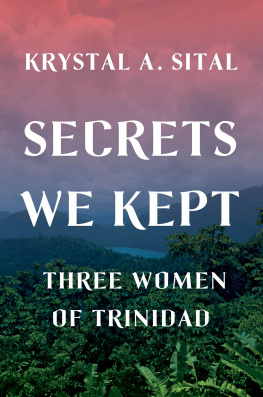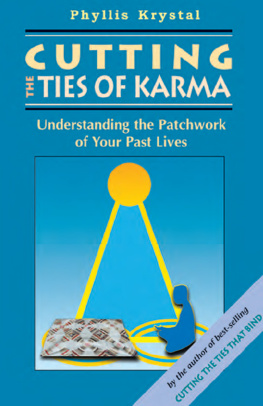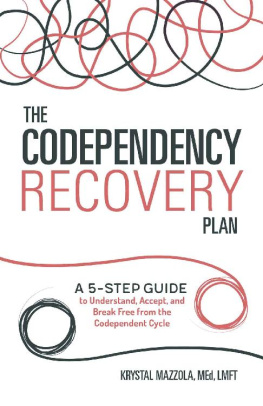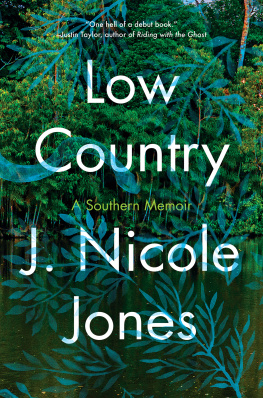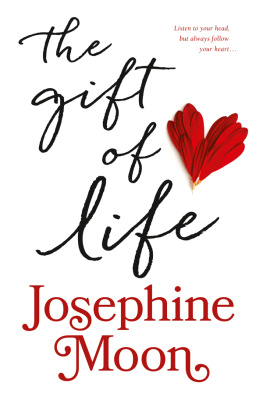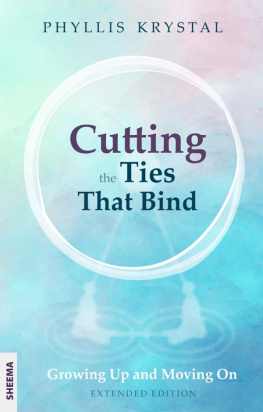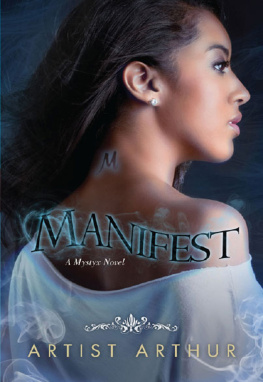
This book is for you, Mom and Gramma.
May the words weve breathed life into live on forever,
no longer an oral tale carried to the depths of the ocean.

To my partner, Pawel Grzech,
who believed in me always and supported me when
I didnt have the energy to do it myself. Your dedication and kindness
have shown me over and over again what love truly is.

And to the three stars in our lives
Amelia, Emelina, and Grayson
I hope this book reminds you of how you came to be.
May you grow to be brilliant, kind, and patient, my three warriors.

WE ARE OF TRINIDADmy grandmother, my mother, and I.
Our island is located in the Lesser Antilles of paradise, a dot on the map that is often forgotten. It like ah drop ah oil, some say, as doh somebody forget to wipe it ahwey.
The bodies of water that seep into the island are as much a part of the islands identity as they are a part of ours, and everywhere we have come to settle after abandoning home has been with the proximity of the seaside in mind. Perhaps the openness of the sea soothes the inner turmoil of us island women, or perhaps it shows the islands inability to contain us.
While attending school in Trinidadhwome, as we will call it for the rest of our lives, though we are all now settled in Americawere taught how Christopher Columbus discovered it in 1498. That the Carib and Arawak tribes were indigenous didnt stop historians from calling it a discovery. In conversation with Americans, Ive heard my grandmother and mother draw the same facts from our elementary education, the same ones I mention to others today. Do you know why its called Trinidad?, Its because of the three hills along the southern coast of the islandMorne Derrick, Gros Morne, and Guaya Hill. When Columbus first spotted the land on July 31 in 1498 he was inspired to name it after the three hillsLa Trinidad, the Trinity. These ternate hills that peak above the clouds in mottled greens, picturesque, majestic, form a wall that breaks the patterns of the most ferocious hurricanes, a natural protection that no other island in the Caribbean owns. The Trinity represents our most powerful guardians.
Rising with elegance along the bluffs, the supple branches of immortelle trees stretch wide, their leaves on fire against the backdrop of a perfect Caribbean sky. Native to Venezuela, just off the coast of Trinidad, these mountain trees shine emerald all year round in their natural habitat. Once they were brought to Trinidad to cast shade over the cocoa plantations in the nineteenth century, they too, like all else touched by the islands, changed. Their roots burrowed deep, and they exchanged their greenery for fire petals that flicker orange and red along the regions of Trinidad and Tobago. Sown into the very history of the terrain, we choose what of the island we will share with others, and so the beak of a hummingbird dipping into the beaded nectar of an immortelle flower creates the ambiance for the stories we choose to tell. And so, like the fingers of a hand skimming the water of a glassy tide pool, you touch but the surface.
What we never say is how historians call the naming of Trinidad a historical hoax. Columbus had every intention of baptizing the next land he found La Trinidad. Its having three hills was either mere coincidence or a miracle. It depends on how one chooses to tell the story.
Most people shake their heads in confusion when we tell them where were from. Where? they ask. Where exactly is that? And sometimes those who have a vague familiarity with the Caribbean will say, I thought everyone there was black.
On our islands you will find descendants of the Carib and Arawak tribes, Europeans, Venezuelans, Chinese, Syrians, French, Portuguese, and Lebanese, but of them all, the two largest groups by far are East Indians and Africans. Centuries before Trinidad became a British colony, before Sir Walter Raleigh discovered the natural Pitch Lake that gleamed the blackest blue along spools of water on Trinidads knee, before Columbus spotted the island, Amerindians called it home. They called it IeriLand of the Hummingbird. But when Columbus sailed upon them, these people were captured, enslaved, and littered along the coasts of other Caribbean islands, forced to work for Spain.
Our island changed hands, and when the British captured it from Spain, they brought African slaves to work the leafy grounds of the sugar plantations. This was the only group of people to exist on the island as slaves, and when slavery was abolished in England, the wealthy landowners in Trinidad then brought indentured laborers from India to replace the Africans on the plantations.
At least we geh pay, the Indians now say, dem niggas an dem come as slave. They know the history but continue to etch in these lines drawn for them. They perpetuate a war, the East Indians and Africans, one group thinking they are better than the other, East Indian children rhyming in the schoolyard, Nigga nigga come foh roti, all de roti done, when de coolie raise e gun, all de nigga run. And Africans taunting, Eenie meenie miney mo, ketch ah coolie by e toe, when e ready let im go, eenie meenie miney mo.
And so this enmity between Africans and Indians led them, and others, to maintain the perceived purity of their bloodlines, further carving hatred into our islands history. Interracial couples and their multiracial children are still shunned as they were in my mothers childhood and my grandmothers. The blended are labeled mulatto, dougla, cocopanyol. These words are hissed and spat at my family: my grandmother is mixed, my Indian grandfather is not.
The shorelines of the islands are still unmarred by cement skyscrapers, but throngs of tourists trample lands natives can no longer afford, and boardwalks, chlorinated pools, and lobbies adorned with plastic plants have been cropping up with the image of paradise being sold.
But the republic of Trinidad and Tobago is where coconut trees rise out of the land, their backs braced against the breezes, spines curved into Cs all along the shores, and coconut husks ripped from their mother trees dot the sand on every coast.
Our stories are rooted in the Caribbean, our histories woven into its bougainvillea trellises with their paper-thin petals; the lone road winding round and round the mountain like a serpent strangling a tree, coiling up and down again to the virgin beaches untouched by hotels and tourists, crowds, and money; the foliage so dense and green its a prismatic shade of malachite, almost as though the vegetation itself is choking the life out of the island. This is a place where the intoxicating aroma of curry drapes itself around you in layers; where bake and shark sandwiches are fried on the beach; where the main ingredient for every dish is the heady bandanya, our word for culantrono, not cilantro, it is much stronger than that. Here, people devour every part of every animal from the eyeballs to the guts and lick their fingers and pat their bellies when they are through.
The island can be traversed in a day, less than that if you know what youre doing. A mere ten degrees north of the equator, it is a place of heat so intense it can drive a person insane, and yet the waves curling against the seashore deep in the valleys between mountains and the luminous rivers that seem to fall from the sky itself can quench that same persons soul for eternity.
Next page
